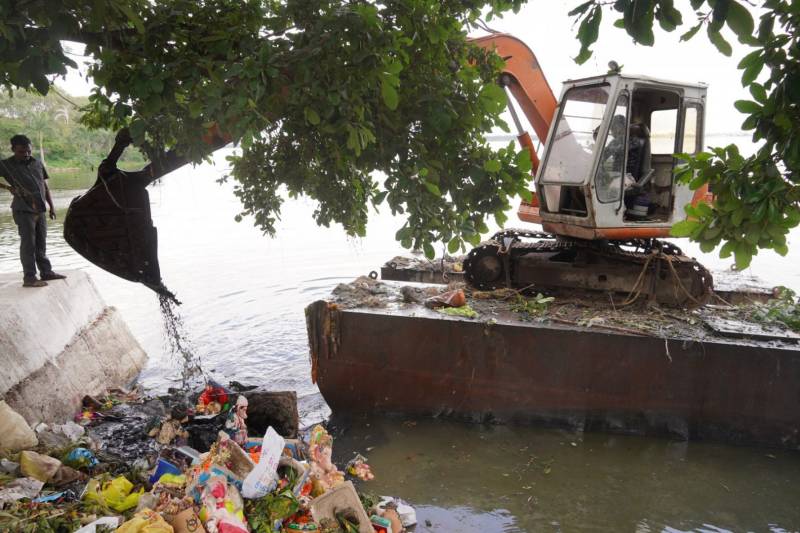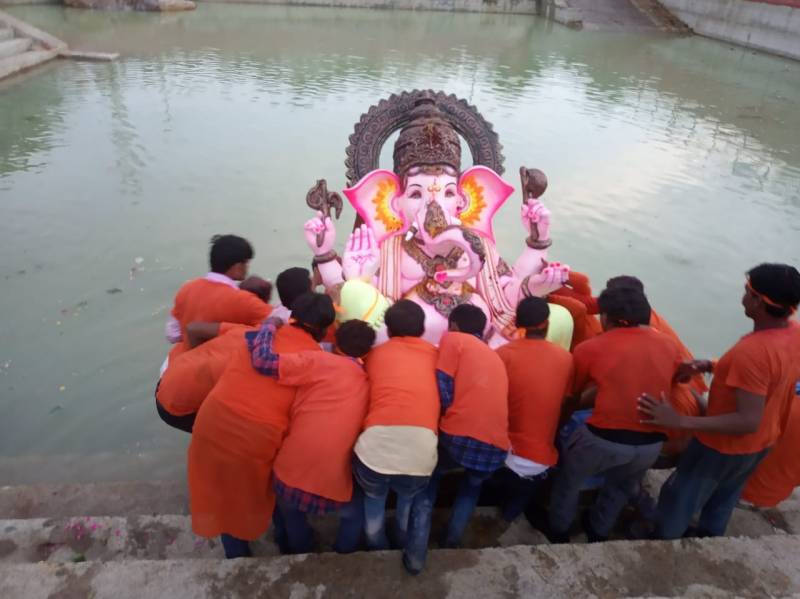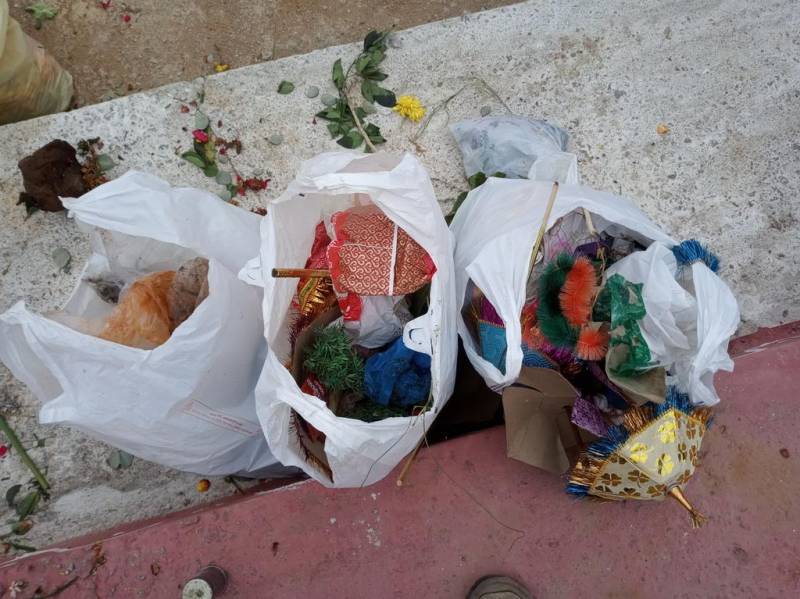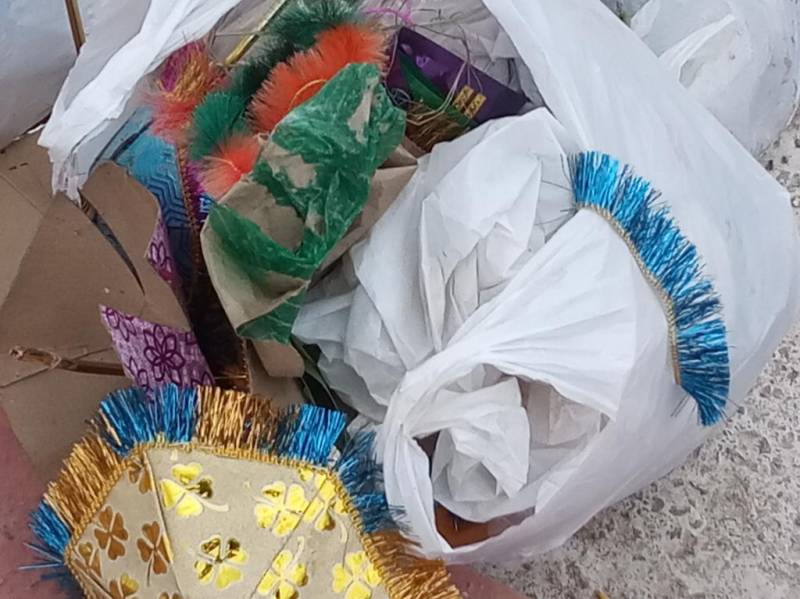Can we skip the toxic immersion ?
By Anurag Mallick
Hyderabad: It’s that time of the year when the destination of every household and Ganesha pandal in the city is the lakes, rivers and water bodies to immerse the Ganesh idols. On an average, around 50,000 Ganesha idols are immersed every year in Hyderabad and the city generates 5,000 tonnes of waste with about 450-500 tonnes being plastic.
This brings to fore the environmental hazards that immersing idols does to water bodies. The immersion of Ganesha idols begins from the first day of Ganesha Chathurthi. During immersion waste such as polythene bags are found in the water bodies along with biodegradable wastes such as flowers, leaves and fruits.

Speaking to Newsmeter, environmentalist and founder of the environmental organisation Dhruvansh, Madhulika Choudhary said, “This year clay Ganesha idols were more than the Plaster of Paris idols. The segregation of puja materials has been better this year when compared to the last two years. Only three packets of non-biodegradable wastes were recovered. In the last three days more than 300 Ganesha idols were brought for immersion to the Neknampur lake.”
Last year, the Neknampur lake received 4,700 Ganesha idols for immersion both clay and PoP. The organisation collected three cartons of fruits, two packets of rice (each of 5kg) and two bags of coconut. Other biodegradable items such as bananas, mango leaves and flowers were also found. During immersion time in 2018, three tractors of waste were generated from the third day of immersion.

One wonders as to why all the hue and cry about the waste being harmful to the lakes and the land. Madhulik says, “The waste consists of Kumkum, haldi which are adulterated and harm the biodiversity existing among the aquatic life. The paint used to colour the idols carry metals such as arsenic, lead, chromium, manganese etc which are again harmful. Puja material like fruits, leaves, flowers, coconuts, rice etc. can be given to the needy rather than them being adding to the lake water, where they become sludge and stink up the water.”
So how bad does all this affect the water quality? Madhulika says, “Now, immersion takes place in ponds, hence the Neknampur lake is saved. Otherwise, in earlier years, the pH used to become very low (acidic). Dissolved oxygen becomes zero, and biological oxygen demand reaches to 50.”
The only solution to avoid waste generation during festivals like this is segregation and awareness. Segregating puja materials will help reduce fruit wastage as composting it will reduce pressure on landfills, environmentalists say.
“Speaking to Newsmeter, another environmentalist Mr Subba Rao said, "Around 50,000 idols are immersed in Hyderabad every year generating 5,000 tonnes of waste. In 30 years as an environmentalist I have not found any difference. Nothing has changed." He added, people take the initiative in worshipping and immersing the idols. But where is the citizen spirit for water conservation? Who will take the initiative?.
